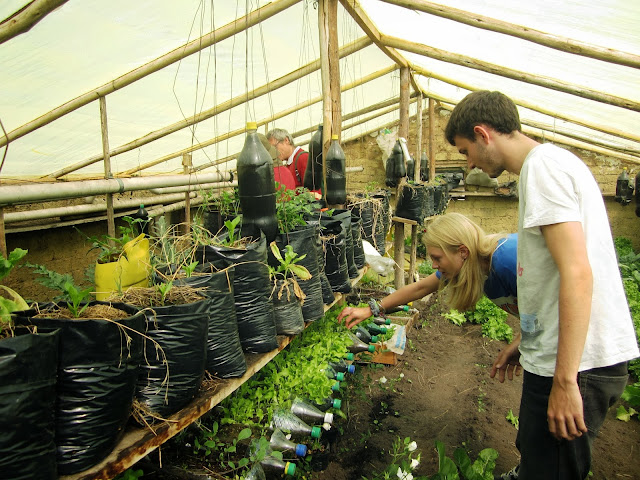After some mad dashes through airports to make connections, losing my insect repellant and sun cream (confiscated from hand luggage in Colombia) and one of my favourite Omani scarves (fell out of bag when running to gate in Costa Rica) along the way, I finally made it to Nicaragua in Central America.
With a weekend off before the participants for the ICS Regional Latin America Workshop arrive in Granada, I decided to head to the nearby Laguna de Apoyo to catch my breath (and catch up on emails) for a couple of days. Seemed like a great idea until I tried to take some money out and discovered my bank card had been blocked. Apparently even the Natwest fraud team think my travel plans might be a bit unrealistic. But as my Dad always tells me, "you never take the easy road but it always works out in the end"!
 |
| Laguna de Apoyo (Mombacho in background) |
 |
| Close up on Volcán Mombacho |
 |
| Hammocks outside cabanas |
 |
| Open air shower in cabana |
The story goes that Laguna de Apoyo was created by the collapse of a large volcano, 23,000 years ago. Filled with rainwater and supplemented by a network of underwater streams and warm fumaroles, the water is a blissful 26 to 28 degrees. The crater bottom lies 200 metres below the surface and is about 100 metres below sea level, apparently the deepest point in Central America. With the hotel for the training workshop fully booked for the weekend, I set up office at San Simian Eco Lodge, with its rustic cabanas, open air showers and "howling monkey" alarm clocks. It was the perfect place to catch up on some last minute workshop preparations after my busy schedule in La Paz as well as finding a bit of time to read, swim and kayak. If you're ever anyway nearby, I highly recommend it: http://www.sansimian.com/
 |
| Work... |
 |
| Read... |
 |
| Kayak... |
On Saturday night I headed into Granada to stay at the hotel where we'll be based for the next week, with workshop participants coming in from ICS Country Offices in Nicaragua, El Salvador, Honduras and Bolivia on Monday. Granada is described by the Lonely Planet as a "Spanish colonial masterpiece" and the hotel is no exception. The beautiful architecture, horse-drawn carriages and lively mardi-gras atmosphere on the streets doesn't disappoint and, after two weeks travelling on my own, I'm looking forward to spending the whole week here with colleagues from the ICS Hub in London as well as the workshop participants.
Before Sarah, Dave and Phil from the Hub arrived this afternoon, I headed off to explore Volcán Mombacho, a 1344 metre active volcano which provides the backdrop to the city of Granada. On the way up I met a Canadian couple who were keen to do the longer of the two crater hiking trails at the top, but when we got up there, the clouds rolled in and they closed all but the shortest of the trails. We still got to walk around the crater (not that you could see much because of the clouds) but it was still an interesting place to go, with a few fumaroles (cracks in the earth's crust) that, when you stand over them, feel like you're doing a facial steam. Just chuck in some vicks vaporub and it's the perfect decongestant!
 |
On the way to the crater
|
 |
| Doesn't look hopeful! |
 |
| With Sabrina and Reg enjoying the "view"! |
 |
| The "view" (over the crater) |
 |
| Fumarole face steam |
On the way back down we visited the reserve's coffee plantation and hacienda. Coffee is Nicaragua's largest export so often what remains in the country doesn't taste that great but it was fun to try out some of the different grounds. On the way back to Granada we got caught in a massive downpour as we tried to (unsuccessfully) shelter ourselves in the back of a tuk tuk. Did I forget to mention the rainy season? Probably because I didn't really know myself until I got here, but so far it's rained most afternoons or evenings (sometimes both). At Laguna de Apoyo it was actually quite dramatic, watching the dark clouds roll in from the other side of the lake and then turn to blue skies half an hour later. The mosquitoes aren't such a positive effect, and with an increase in incidences of dengue fever, I'm getting used to stinking of insect repellant 24 hours a day!
 |
| View from coffee plantation |
 |
| From plant... |
 |
...To roast
A very wet tuk tuk ride back to Granada
|








































































